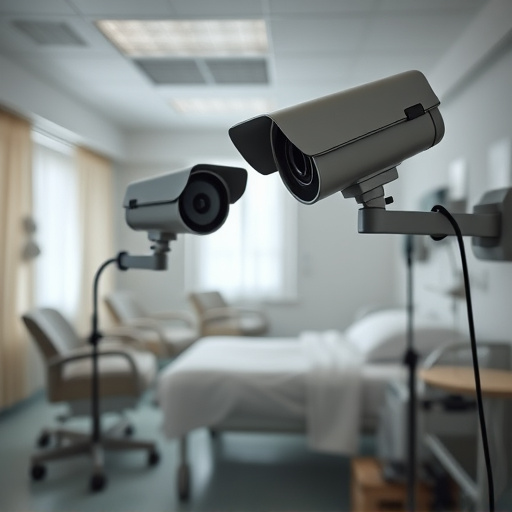Installing cameras in senior living facilities, especially nursing homes, is a priority for enhancing safety and security. These surveillance systems monitor daily activities, aid in risk prevention, and provide reassurance for families. Nursing homes can choose from basic CCTV to advanced smart cameras with AI capabilities. Smart cameras offer real-time alerts, remote access via mobile apps, and valuable data for care optimization. However, they also raise ethical privacy concerns. To balance security and privacy, facilities should select camera systems with high-quality features, data protection compliance, and individual resident control, ensuring both safety oversight and respect for elderly residents' autonomy.
In today’s digital age, ensuring the safety and well-being of residents in senior living facilities is paramount. Cameras for nursing homes have emerged as a crucial tool, offering peace of mind for both staff and families. This article delves into the understanding of the need for surveillance cameras in these facilities, exploring various types available and their numerous benefits. We also navigate ethical considerations and provide insights on choosing the ideal camera system, highlighting key features for effective senior care management.
Understanding the Need for Cameras in Senior Living Facilities
In today’s digital era, implementing cameras in senior living facilities, including nursing homes, has become increasingly essential. The primary goal is to enhance safety and security for both residents and staff. With an aging population, ensuring the well-being of seniors becomes a top priority. Cameras serve as a crucial tool for monitoring daily activities, preventing potential hazards, and providing peace of mind for families and caregivers.
These surveillance systems enable caregivers to navigate the bustling environment of a nursing home efficiently. They can remotely monitor residents’ welfare, especially those with dementia or cognitive impairments, ensuring their safety without constant direct supervision. Cameras for nursing homes also play a vital role in documenting and verifying activities, facilitating better communication between staff and families, and providing valuable data for improving overall care processes.
Types of Cameras Available for Nursing Homes
Nursing homes today have a range of camera options to choose from when it comes to monitoring and enhancing resident safety. From basic surveillance cameras to advanced smart cameras, each type offers unique features catering to different care needs. Traditional CCTV cameras provide clear video footage for round-the-clock observation, ideal for high-risk areas like kitchens and medication rooms. These cameras are reliable and cost-effective, offering a straightforward solution for monitoring activity.
Smart cameras take surveillance to the next level with integrated AI technology. They can detect unusual behaviors, recognize faces, and alert staff in real time. These cameras also facilitate remote monitoring by providing access to live feeds and recorded videos via mobile apps. This feature empowers family members and caregivers to stay connected and keep an eye on their loved ones from afar, making them a popular choice among modern nursing homes aiming to offer both security and accessibility with cameras for nursing homes.
Benefits of Installing Surveillance Cameras
Installing surveillance cameras in senior living facilities, particularly nursing homes, offers numerous advantages that significantly enhance overall care and safety. These cameras serve as a powerful tool for monitoring and documenting resident activities, ensuring their well-being. With continuous footage, staff can quickly identify any concerning behaviors or incidents, enabling prompt intervention and better decision-making.
Moreover, cameras for nursing homes provide an extra layer of security, deterring potential malfeasance and giving families peace of mind. Real-time access to live feeds allows relatives to remotely check on their loved ones, fostering a sense of transparency and trust. This technology also aids in staff training by providing valuable insights into resident routines and care practices, facilitating continuous improvement and compliance with healthcare standards.
Ethical Considerations and Privacy Concerns
The introduction of cameras in senior living facilities, particularly nursing homes, brings about a complex web of ethical considerations and privacy concerns. While surveillance technology can offer enhanced safety and security for residents, it raises questions about individual autonomy and the right to privacy. Balancing these factors is crucial, especially as cameras become more prevalent in these settings, monitoring activities and interactions within the home.
Privacy advocates argue that widespread camera usage may lead to a loss of personal space and dignity for elderly individuals, who might feel constantly observed. Moreover, access to and control over recorded footage must be carefully managed to prevent unauthorized use or disclosure. With proper guidelines and transparency in place, cameras can serve as valuable tools for ensuring resident safety without compromising their right to privacy.
Choosing the Right Camera System for Your Senior Care Center
When selecting a camera system for your senior care center, consider specific needs like security, monitoring, and resident well-being. Cameras for nursing homes should offer clear, high-quality video with audio capabilities to facilitate communication. Look for systems with features like motion detection, night vision, and remote access to ensure round-the-clock surveillance without constant staff oversight.
Additionally, privacy is paramount. Choose a system that adheres to data protection regulations and allows for individual resident control over their cameras. This fosters trust and respect for personal boundaries while still enabling staff to monitor for safety and well-being.
